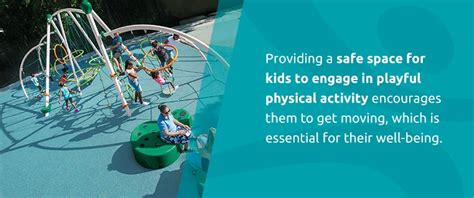The Americans with Disabilities Act (ADA) Accessibility Guidelines play a crucial role in fostering inclusive educational environments. These guidelines ensure that students with disabilities have equal access to educational opportunities and resources. This article provides a comprehensive analysis of the ADA Accessibility Guidelines, highlighting their importance in education. We will explore key provisions relevant to educational settings, outline effective strategies for implementing these guidelines in schools, and discuss the benefits for students with disabilities. Additionally, we will address the challenges institutions face in adopting ADA guidelines and present case studies of successful implementations, demonstrating the positive impact of ADA compliance on creating an inclusive and supportive learning environment for all students.
Join gameshoek.com as we delve deeper into this topic.
1. Overview of ADA Accessibility Guidelines
The Americans with Disabilities Act (ADA) was enacted in 1990 to prohibit discrimination based on disability and ensure equal opportunities for individuals with disabilities. The ADA Accessibility Guidelines (ADAAG) provide detailed standards for making public spaces, including educational institutions, accessible to people with disabilities. These guidelines cover a wide range of accessibility requirements, such as physical infrastructure, communication methods, and program accessibility. ADAAG specifies standards for building entrances, restrooms, classrooms, and other facilities, ensuring they are accessible to students with mobility, sensory, or cognitive impairments. It also addresses the need for effective communication, requiring schools to provide auxiliary aids and services, like sign language interpreters and captioning. By adhering to these guidelines, educational institutions can create environments that accommodate the diverse needs of all students, promoting inclusivity and equal access to education. Understanding and implementing the ADA Accessibility Guidelines is essential for schools to comply with federal law and to foster a supportive, inclusive atmosphere that benefits every student.

2. Importance of ADA Compliance in Education
ADA compliance in education is vital for creating an equitable and inclusive environment for all students. Ensuring that educational institutions adhere to ADA Accessibility Guidelines means that students with disabilities can access the same opportunities as their peers. This compliance is not just a legal obligation but a moral imperative, as it fosters an inclusive atmosphere where every student feels valued and supported. By removing physical and communication barriers, schools enable students with disabilities to participate fully in academic and extracurricular activities, enhancing their educational experience and outcomes.
Moreover, ADA compliance promotes diversity and inclusion, enriching the learning environment for all students. When schools implement these guidelines, they demonstrate a commitment to social justice and equal opportunity. This not only benefits students with disabilities but also raises awareness among all students about the importance of accessibility and inclusivity. Ultimately, adherence to ADA guidelines helps prepare all students for a diverse world by promoting empathy, understanding, and collaboration. In essence, ADA compliance in education is a cornerstone for building a more inclusive, supportive, and effective learning environment for everyone.

3. Key Provisions of ADA Relevant to Educational Settings
The ADA contains several key provisions that are particularly relevant to educational settings, ensuring that schools are accessible and inclusive for students with disabilities. One fundamental provision is the requirement for physical accessibility. Schools must ensure that buildings, classrooms, restrooms, and other facilities are accessible to students with mobility impairments. This includes installing ramps, elevators, and accessible pathways, as well as modifying doorways and restrooms to accommodate wheelchairs.
Another crucial provision is the mandate for effective communication. Educational institutions must provide auxiliary aids and services to ensure that students with hearing, vision, or speech impairments can fully participate in the learning process. This may include sign language interpreters, captioning services, Braille materials, and assistive listening devices.
The ADA also emphasizes the importance of program accessibility. Schools must ensure that all programs, activities, and services are accessible to students with disabilities. This means making necessary modifications to policies, practices, and procedures to avoid discrimination and ensure equal participation. Additionally, schools are required to provide reasonable accommodations and modifications to support students with disabilities, such as extended time on tests, modified assignments, and accessible transportation.
By adhering to these key provisions, educational institutions can create an inclusive environment that supports the diverse needs of all students, fostering equal opportunities and enhancing educational outcomes.

4. Strategies for Implementing ADA Guidelines in Schools
Implementing ADA guidelines in schools requires a comprehensive and proactive approach. First, schools should conduct accessibility audits to identify and address any physical barriers that may impede access for students with disabilities. This includes installing ramps, elevators, and accessible restrooms, as well as ensuring that classrooms and common areas are navigable for all students.
Training staff and educators on ADA requirements and inclusive practices is also crucial. Providing professional development on how to effectively use auxiliary aids and services, such as sign language interpreters and Braille materials, ensures that all students can participate fully in the learning process.
Developing and implementing individualized education plans (IEPs) and 504 plans can help accommodate the unique needs of students with disabilities. These plans should outline specific modifications and supports, such as extended time on tests and modified assignments, to ensure equal access to educational opportunities.
Finally, fostering a culture of inclusivity within the school community is essential. Encouraging empathy, understanding, and collaboration among students and staff helps create a supportive environment where all students feel valued and included. By adopting these strategies, schools can effectively implement ADA guidel

5. Benefits of ADA Compliance for Students with Disabilities
ADA compliance offers numerous benefits for students with disabilities, significantly enhancing their educational experience. By ensuring physical accessibility, schools provide students with disabilities the freedom to navigate the campus independently and safely. This fosters a sense of autonomy and confidence, which is crucial for their personal development.
Effective communication provisions, such as sign language interpreters and Braille materials, enable students with sensory impairments to engage fully in classroom activities and access the same information as their peers. This equal access to learning materials promotes academic success and helps students with disabilities reach their full potential.
ADA compliance also ensures that all programs and activities are accessible, allowing students with disabilities to participate in extracurricular activities, sports, and social events. This inclusive approach helps build social skills, friendships, and a sense of belonging, which are vital for overall well-being.
Moreover, the implementation of reasonable accommodations and individualized support plans, such as IEPs and 504 plans, provides tailored assistance that addresses the specific needs of each student. This personalized support enhances learning outcomes and academic achievement.
Overall, ADA compliance not only ensures legal adherence but also creates a more inclusive, supportive, and enriching educational environment for students with disabilities.

6. Challenges in Adopting ADA Guidelines in Educational Institutions
Adopting ADA guidelines in educational institutions presents several challenges. One significant obstacle is the financial burden associated with making physical modifications to existing buildings. Retrofitting facilities to include ramps, elevators, accessible restrooms, and other necessary adaptations can be costly, particularly for schools with limited budgets. Securing funding for these upgrades often requires significant time and effort.
Another challenge is ensuring that all staff members are adequately trained in ADA requirements and inclusive practices. Providing comprehensive professional development on the use of auxiliary aids, effective communication strategies, and the implementation of individualized support plans can be resource-intensive and time-consuming. Ensuring consistent application of these practices across all staff members is essential but can be difficult to achieve.
Additionally, schools may encounter resistance to change from within the institution. Staff, administrators, and even students may have preconceived notions or lack awareness about the importance of accessibility and inclusivity. Overcoming this resistance requires ongoing education and advocacy to build a culture of acceptance and support.
Finally, balancing the diverse needs of students with disabilities while maintaining equitable resources for all students can be complex. Developing and implementing individualized education plans (IEPs) and 504 plans that effectively address each student’s unique needs requires careful planning and coordination.
Despite these challenges, adopting ADA guidelines is crucial for creating an inclusive educational environment that supports all students.

7. Case Studies of Successful ADA Implementation in Schools
Several schools have successfully implemented ADA guidelines, demonstrating effective strategies for creating inclusive environments. At Lincoln High School in San Diego, extensive modifications were made to ensure accessibility. The school installed ramps and elevators, renovated restrooms, and redesigned classrooms to accommodate students with mobility impairments. Additionally, they provided training for staff on ADA requirements and inclusive teaching practices. As a result, the school saw increased participation from students with disabilities in all academic and extracurricular activities, fostering a more inclusive school culture.
Another example is Riverside Elementary in Chicago, which implemented comprehensive communication strategies. They introduced assistive technologies, such as real-time captioning and Braille textbooks, and ensured that all teachers were trained to use these tools effectively. This approach significantly improved educational access for students with hearing and vision impairments, leading to better academic performance and increased student engagement.
These case studies highlight how targeted modifications and staff training can effectively address the needs of students with disabilities. By implementing ADA guidelines, these schools created supportive environments that enhanced the educational experience for all students, demonstrating the positive impact of compliance on school communities.

Incorporating ADA Accessibility Guidelines into educational settings is essential for fostering inclusivity and equal opportunity for all students. By addressing physical, communication, and programmatic barriers, schools can create environments where every student, regardless of ability, can thrive. Embracing these guidelines not only ensures legal compliance but also enriches the educational experience for all learners.
gameshoek.com
